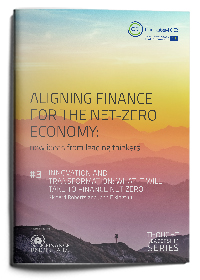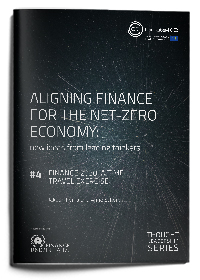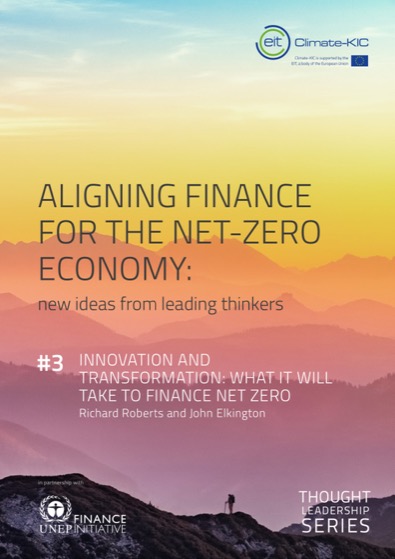UNEP FI is continuing its partnership with EIT Climate-KIC to bring some of the world’s leading thinkers to contribute to a series of thought leadership papers. Our aim is to inspire financial actors worldwide to move from risk to alignment, challenge current assumptions around climate alignment and develop ideas and concepts on how alignment can best be achieved. We hope to encourage stakeholders that a proactive climate response is not only about disclosing risks, but also about investing in green opportunities that can enable the low emissions societies of the future. This series convenes innovators and industry experts to provoke discussion, challenge the status quo and guide the transformation of business and finance towards a sustainable future.
The papers in this series will respond to a number of key questions :
- What economic system transformation is actually required to deliver the Paris Agreement?
- How do financial institutions achieve alignment with the Paris Agreement and how does it differ from transition risk transparency as captured in the TCFD?
- What is the future of financial institutions as a result of these changes?
- What are the various strategies and action tracks through which financial institutions can enhance and achieve full portfolio alignment?
- What are the pathways and choices needed for financial institutions and the financial system to drive an active transition to a net zero-carbon economy?
Following the success of the first two papers authored by Dr Ben Caldecott and Dennis Pamlin, respectively, the third and fourth papers aim to address how finance will respond to the challenges of a transition economy over the next decade:
 Richard Roberts & John Elkington (Volans):
Richard Roberts & John Elkington (Volans):
“Innovation and Transformation: What it will take to finance net zero”
This paper examines what it really means to align global finance to the Paris Agreement – and more specifically to the Low Energy Demand (LED) scenario outlined in the IPCC’s Special Report on Global Warming of 1.5°C. The transformation required to deliver on these goals is historically unprecedented and will require a dramatic and sustained drop in both emissions and energy demand. Only systemic transformation comparable to the technological revolution that we have seen over the last 30 years will be able to deliver such objectives. The authors argue that this paradigm shift is already underway, and outline four “inconvenient truths” for financial institutions about the transition. The report closes with a set of recommendations for how the financial industry, financial regulators and economic actors should respond, founded on the need for finance to act as though limiting warming to 1.5°C is an important goal in its own right.

Jakob Thomä & Anne Schönauer (Two Degrees Investing Initiative, 2DII):
“Finance 2030: A Time Travel Exercise”
The authors outline the four key characteristics that will define the finance sector in 2030: Control, Automated, Local, Low-carbon & resource (‘CALL’ for short). By looking into the future and characterising economic and financial trends, the paper identifies the risks and opportunities facing the world of tomorrow.
While some of the trends identified are already emerging and other unanticipated realities may emerge over the coming decade, the authors contend that the implications are likely to hold over a range of scenarios.
The report intends to show how these ideas will shape our future and what the implications may be for financial institutions, as well as for supervisors and central banks that monitor and regulate these institutions.
Read the first two pieces in the series:
- Dr Ben Caldecott (University of Oxford): “Achieving Alignment in Finance” explores what climate alignment means for financial institutions, and
- Dennis Pamlin (Research Institutes of Sweden): “Transformations Required for 1.5°C Alignment and Global Sustainability” looks at the actions necessary to deliver a 1.5°C society.



